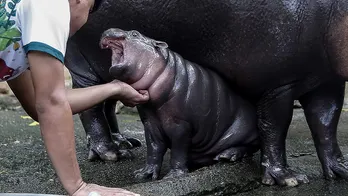'No need to be afraid' of 'venomous flying spiders,' expert says
Reports of "venomous flying spiders" poised to invade the United States may seem scary to some, but multiple spider experts told Fox News Digital this week that, while there's cause for concern, there is no threat to humans or pets.
The Joro spider, an invasive species originally from Asia, was first officially sighted in the United States about 10 years ago, Dr. David Nelsen, a professor in the Biology and Allied Health Department at Southern Adventist University in Tennessee, said in a phone interview.
Nelsen published a research paper on the spread of Joro spiders in 2023.
FLORIDA OFFICERS 'ARREST' NUISANCE ALLIGATOR AT 104-YEAR-OLD WOMAN'S HOME
"I think that we should be worried, because it's invasive, and they look like they're having an effect on the ecosystem," Nelsen said.
Yet in terms of the safety of humans, pets and property, these spiders do not pose much, if any, of a threat at all, he said.
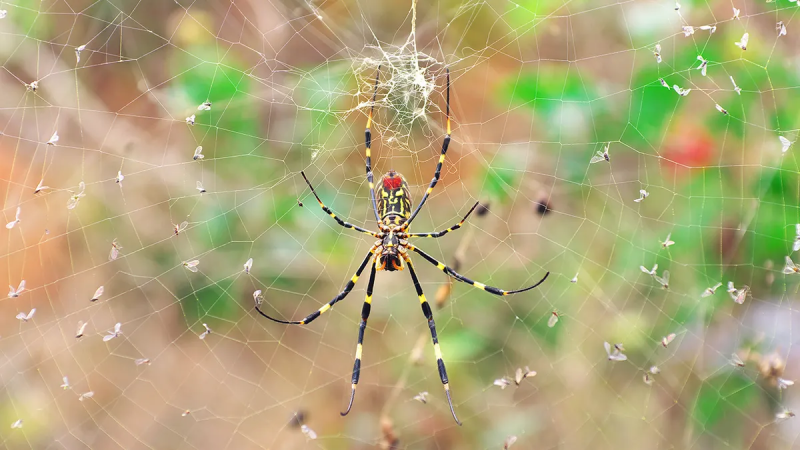
Joro spiders are native to Asia but have recently made their way to the United States, an expert told Fox News Digital. (iStock)
"They're more of a nuisance than anything," Nelsen said. "They're going to decorate your house with webs. They tend to like to aggregate together in these large communities. And that can bother people."
Their large size — their legs can grow up to 4 inches — can be unsettling for people who do not like spiders, he added.
ELUSIVE AND 'HIDEOUS' FISH STUNS VIEWERS AFTER INSTAGRAM POST GOES VIRAL: 'NEW FEAR UNLOCKED'
"But as far as venom is concerned, you're not hearing reports from China and Korea about envenomations and risk," Nelsen said. "They're really not aggressive spiders."
Joro spiders "look more scary than they actually are."
Joro spiders "look more scary than they actually are," Allan Bossel, operations expert at Florida-based Bed Bug Exterminator, told Fox News Digital.
"They definitely are big, and they can catch all kinds of things in your yard, like flies and wasps, but also bees and butterflies," said Bossel, who specializes in general insect control, according to the company's website.
While the Joro spiders, like the vast majority of spider species, have venom glands, that venom does not pose a danger to humans or pets, Bossel said.
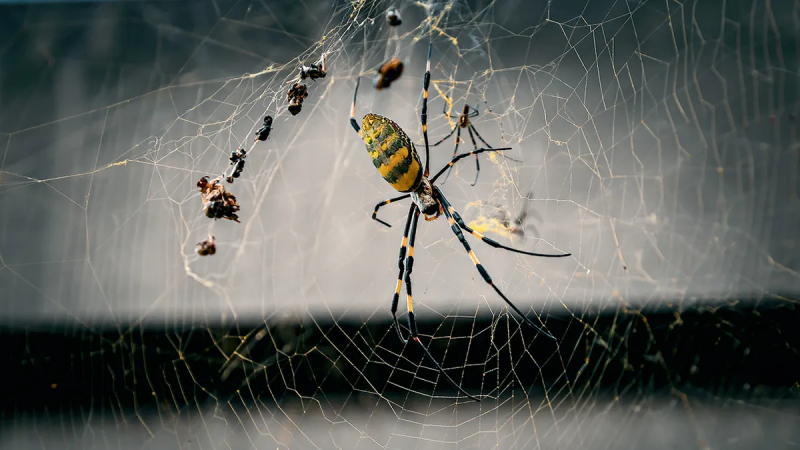
Joro spiders have venom, but they do not pose a danger to humans or pets. (iStock)
"That venom is for their prey and doesn't really harm people or pets," he said.
Joro spiders are "incredibly docile," Dr. David R. Coyle, an assistant professor at Clemson University in South Carolina, told Fox News Digital in an email. He's published research on Joro spiders.
"I've handled dozens of them (and my kids have handled them) with absolutely zero ill effects," he said.
What's more, it is not even certain that the "mouthparts" of a Joro spider can even break human skin, he said.
It is unclear how these spiders made their way to the U.S., but one expert suspects an egg sac hitched a ride on a shipping container.
"In my opinion, there's no need to be afraid of them," Coyle said.
"That said," he continued, "arachnophobia is a thing and some folks may have a genuine fear of Joro spiders (and other spiders, for that matter)."
Orb weaver spiders, like Joro spiders, are also "extremely unlikely" to be found indoors, Bossel said.
LOUISIANA DEPUTY MAKES 'FOWL' DISCOVERY IN MISSING CHILD'S BACKPACK
Today, Joro spiders can be found throughout much of the southern U.S.; there is also said to be a "satellite" population in Baltimore.
It is unclear how these spiders made their way to the U.S., but Nelsen suspects an egg sac hitched a ride on a shipping container.
Their population is, however, likely to continue growing and spreading across the country.
"They look like they can spread pretty wide across the United States, especially in the East," Nelsen said. "I think we've kind of lost the war at this point, in terms of stopping it altogether."
"While our research shows they can likely survive in the Northeast, they aren't there yet."
Coyle concurred, but added that the timeline of the spiders' journey northward was still very unclear.
"While our research shows they can likely survive in the Northeast, they aren't there yet (outside of a small population near Baltimore)," he said.
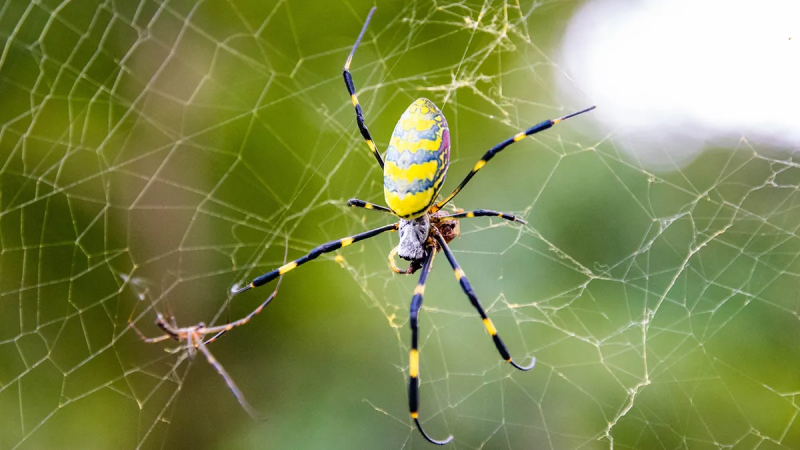
Someone who encounters a Joro spider should use the "tried and true method of ‘squash’" to eliminate the pest, one expert said. (iStock)
"We have no idea whatsoever if or when they’ll make it up there," noted Coyle.
Still, humans can — and should — do what they can to prevent their spread.
"There's the tried-and-true method of ‘squash,’" Nelsen told Fox News Digital.
"Certainly, the average citizen, if you see [a Joro spider], you can kill it," he said.
"The best way to eradicate them would be to target egg sacs."
Coyle agreed, telling Fox News Digital that the arachnids are "soft-bodied and relatively easy to either move or dispatch, should the homeowner choose to do so."
Part of the reason the spiders have been able to establish a population in the U.S. is due to their "live-fast, die-free" lifestyle, Nelsen said.
"They grow really, really quickly, they reproduce, and then the female lays an egg sac and basically dies," he said.
CLICK HERE TO SIGN UP FOR OUR LIFESTYLE NEWSLETTER
The spiders themselves do not survive the winter, but the egg sacs can and do, he said.
"They're kind of cryptic, so they're hard to spot," Nelsen said. "The best way to eradicate them would be to target egg sacs."
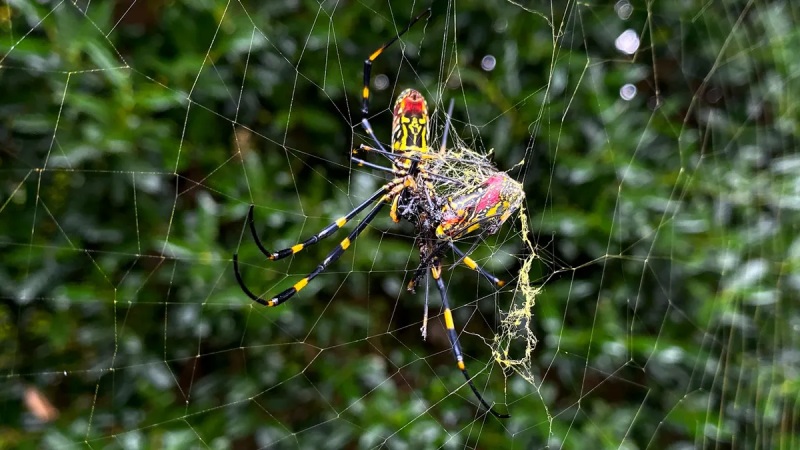
The Joro spider, a large spider native to East Asia, is seen in Johns Creek, Georgia, on Oct. 24, 2021. Populations of the species have been growing in parts of the South and East Coast for years now, and many researchers think it's only a matter of time before they spread to much of the continental U.S. (AP Photo/Alex Sanz, File)
As for reports that the spiders are "flying," Nelsen said that is "kind of misleading."
Joro spiders, like many spider species, "disperse by ballooning," he said.
This means they cast a thread into the air that is picked up by air currents.
However, this happens when the spiders are very small, not in their full-grown adult size.
CLICK HERE TO GET THE FOX NEWS APP
"They're not dispersing as these really large adults," Nelsen said. "They're dispersing as these tiny millimeter-sized spiders, as basically fresh babies."
When the spiders land, they will then grow to their adult size.
For more Lifestyle articles, visit www.foxnews.com/lifestyle
"You're never going to see a ginormous spider fly in and smack you in the face, or something like that," he said.
"These are tiny little spiders that you wouldn't even know. This is happening all the time."
Disclaimer: The copyright of this article belongs to the original author. Reposting this article is solely for the purpose of information dissemination and does not constitute any investment advice. If there is any infringement, please contact us immediately. We will make corrections or deletions as necessary. Thank you.



